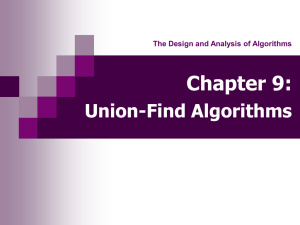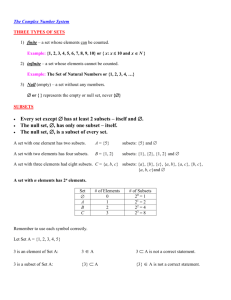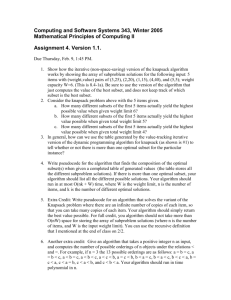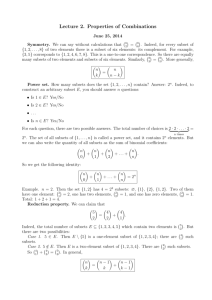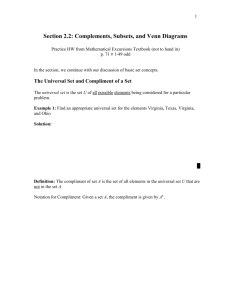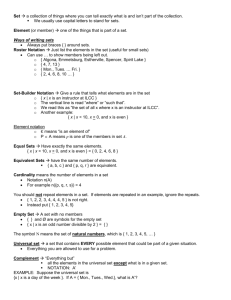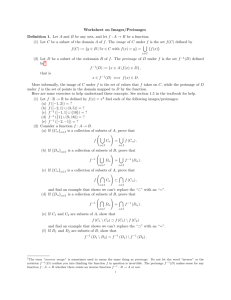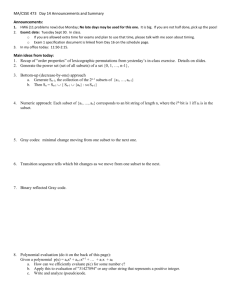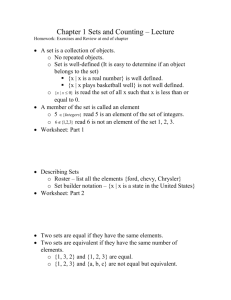mathematical system
advertisement
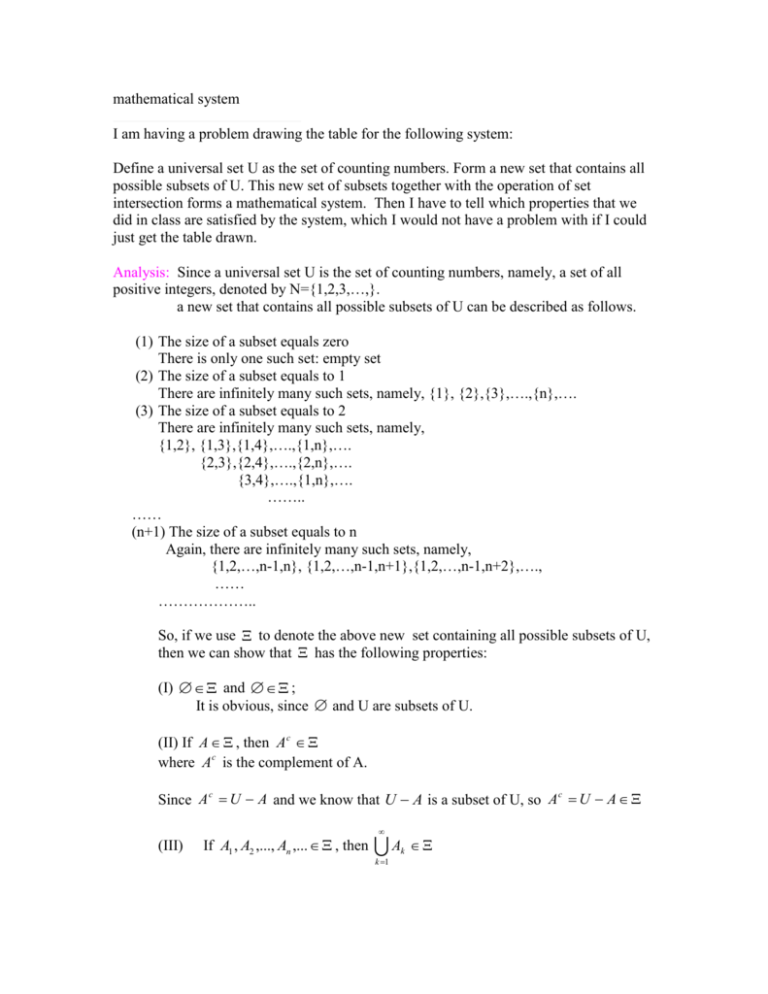
mathematical system
I am having a problem drawing the table for the following system:
Define a universal set U as the set of counting numbers. Form a new set that contains all
possible subsets of U. This new set of subsets together with the operation of set
intersection forms a mathematical system. Then I have to tell which properties that we
did in class are satisfied by the system, which I would not have a problem with if I could
just get the table drawn.
Analysis: Since a universal set U is the set of counting numbers, namely, a set of all
positive integers, denoted by N={1,2,3,…,}.
a new set that contains all possible subsets of U can be described as follows.
(1) The size of a subset equals zero
There is only one such set: empty set
(2) The size of a subset equals to 1
There are infinitely many such sets, namely, {1}, {2},{3},….,{n},….
(3) The size of a subset equals to 2
There are infinitely many such sets, namely,
{1,2}, {1,3},{1,4},….,{1,n},….
{2,3},{2,4},….,{2,n},….
{3,4},….,{1,n},….
……..
……
(n+1) The size of a subset equals to n
Again, there are infinitely many such sets, namely,
{1,2,…,n-1,n}, {1,2,…,n-1,n+1},{1,2,…,n-1,n+2},….,
……
………………..
So, if we use to denote the above new set containing all possible subsets of U,
then we can show that has the following properties:
(I) and ;
It is obvious, since and U are subsets of U.
(II) If A , then A c
where Ac is the complement of A.
Since A c U A and we know that U A is a subset of U, so A c U A
(III)
If A1 , A2 ,..., An ,... , then
A
k
k 1
Once again, since contains all possible subsets of U, we know that
A
k
k 1
also a subset of U. Hence,
A
k
.
k 1
(IV)
If A1 , A2 ,..., An ,... , then
A
k
k 1
Same reason as that in (III)
I hope I answered your question.
Good luck!
Changping
is



